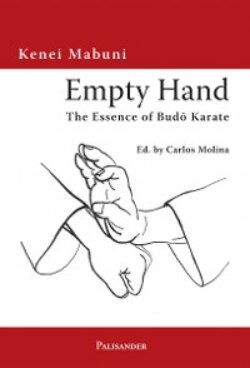Читать книгу Empty Hand - Kenei Mabuni - Страница 23
1.2 The Emergence of Karate on Okinawa The Old Okinawa-te
ОглавлениеOn Okinawa, three different styles of karate developed in three localities – Shuri, Naha and Tomari.33 The term karate was introduced in the years 1911-1912 when the “Okinawa Boxing” or the “Okinawa Hand” became a compulsory subject at Japanese middle schools.
At first karate was written combining the character for “Tang China” with that for “hand”. The people of Okinawa called their native martial art only “hand” (te), and the Chinese kempō was called tō-de i.e. “Tang Chinese hand”. The three local styles were called Shuri style, Naha style and Tomari style, or Shuri-te, Naha-te and Tomari-te, respectively. The oldest one was the Shuri-te. This is an original Okinawan system of hand-fighting techniques which took an independent development nourished by Chinese kempō. There was a saying among the Okinawa karate masters: “The only true hand (te) is the Shuri-te.”34 The youngest style is the Naha-te in which the Chinese kempō is preserved most obviously. The Tomari-te is somewhere in between, geographically as well as technically.
Photo 1: Itosu Ankō (1831-1915), second from left in the second row (with white moustache). This photo was discovered only in 2006 in the archives of Kinjo Hiroshi (born in 1919, 9th dan, president of the International Ryūkyū Karatejutsu Research Society). It is the first known photograph showing Master Itosu. It was taken in 1909 or 1910 when Itosu Ankō had started to teach at the middle school of the Okinawan prefecture in Shuri. The picture also shows the director of the school, some teachers and kendō and jūdō students.
Thanks to the recommendation of an acquaintance of the family my father was allowed to join the dōjō of the great master of the Shuri-te Itosu Ankō when he was 13 years old. Many of the famous karate personalities who contributed to the creation of modern karate came from the school of Master Itosu. He was said to have hit the makiwara (rice straw that is bound together in bundles and attached to a wooden post or board) every day several hundred times according to a schedule he had fixed in the morning in order to harden his fists which in the end looked like black stones. A lot of stories were told about the very muscular body of Master Itosu. His upper arm, when being hit with a thick wooden pole did not even quiver when the pole bounced. He could smash a big bamboo cane in his hand or move hand over hand along a ceiling beam across the room without any effort.
Photo 2: Mabuni Kenwa (1889-1952).
In those days karate was not as popular as today and the rooms for practice (dōjō) were rather simple. Quite often the own garden was used as a dōjō and practice was done in open air. As a child I often watched my father exercising in the garden in the light of a bare bulb hitting the makiwara and hardening his muscles with stone weights.
Master Itosu’s dōjō was not open for everybody. Only very selected persons were taught by him. When my father became 19, Master Itosu allowed him to get lessons from Higaonna Kanryō (1853-1916), who was a famous master of the Naha-te. As a young man Higaonna had traveled to the Chinese province of Fukien and studied there the local kempō. After his return to Okinawa he created the Naha-te based on his studies in China. My father was introduced to Higaonna by Miyagi Chōjun (1888-1953), who later founded the Gōjū ryū. Both became favorite students of Master Higaonna and were called “Dragon and Tiger”, and a lifelong friendship developed between them.
Besides the Shuri and Naha styles, my father also studied the Tomari-te and traditional techniques of the Ryūkyū kobudō. He learned bō techniques from Master Aragaki Seichō (1840-1920), knife techniques from Tawada Shinkatsu (1851-1920) and special bō techniques from Master Soeishi Yoshiyuki.
Photo 3: Higaonna (Higashionna) Kanryō (1853-1916). He was the most important representative of the Naha-te.
Photo 4: Miyagi Chōjun (1888-1953), Higaonna’s disciple and successor, founder of the Gōjū ryū.
